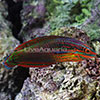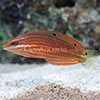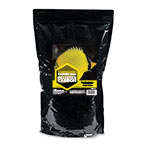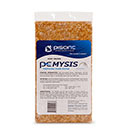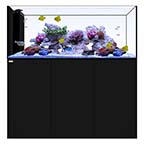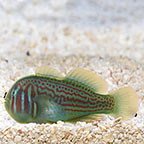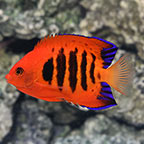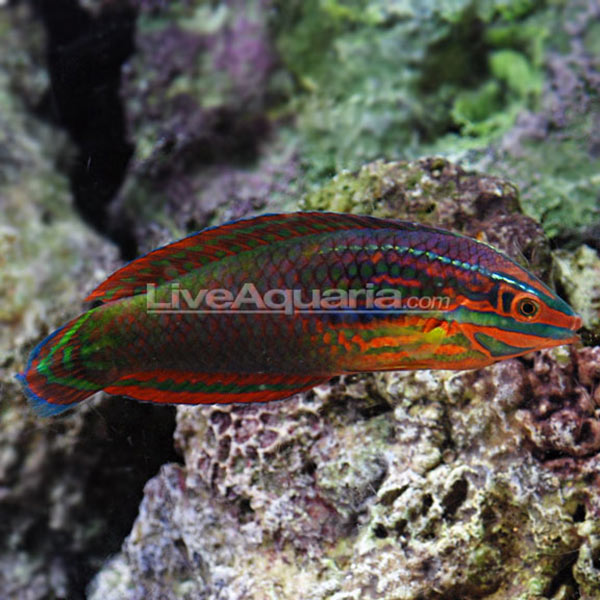
Additional locales and sizes may be available!
Additional locales and sizes may be available! Email me when availableQuick Stats
What do these Quick Stats mean? Click here for more information
What do these Quick Stats mean? Click here for more information
Overview
Bold, beautiful, and brimming with personality, the elegantly-striped Red-Lined Wrasse makes the perfect addition to showcase in your display reef aquarium. Also known in the hobby as the False-eyed or Biocellate Wrasse, juvenile Halichoeres biocellatus and sub adults are easily identifiable by a pair of ocelli, or "false eyes", on the dorsal fin which disappear as the Red-Lined Wrasse matures.
The ideal setup for the Red-Lined Wrasse will be a well-established saltwater aquarium of at least 50 gallons in size with a tight-fitting lid. Aquascape liberally with live rock, making sure to include a large area of open substrate to best replicate the seaward reefs from which the Red-Lined Wrasse originates. In the wild, the Red-Lined Wrasse also prefers to inhabit reef crests and slopes so be sure to maintain open spaces for swimming. A sandy substrate layer 2-3 inches in depth provides refuge for the Red-Lined Wrasse as it burrows into the sand for the evening or when frightened. House the Red-Lined Wrasse with other peaceful wrasses, including members of its own species.
The natural diet of the Red-Lined Wrasse consists of benthic invertebrates and as such, large, hungry Red-Lined Wrasse will eat fireworms and pyramidellid snails, protecting corals and clams from these undesirable invertebrates. The Red-Lined Wrasse may also eat parasites off of tank mates. Though this hearty appetite for invertebrates seems beneficial, keep in mind that the Red-Lined Wrasse cannot differentiate between "undesirable" and "desirable" invertebrates. If the opportunity presents itself, the Red-Lined Wrasse will most likely make a meal of "desirable" ornamental invertebrates including fan worms, shrimp, and other crustaceans in the home aquarium. However, the Red-Lined Wrasse typically will not harm sessile invertebrates including soft or stony corals.
In the home aquarium, the diet of the Red-Lined Wrasse should include vitamin-enriched frozen mysis shrimp and vitamin-enriched frozen brine shrimp. The Red-Lined Wrasse is an active forager that requires frequent small feedings throughout the day.
Approximate Purchase Size: Small: 1" to 2"; Medium: 2" to 3"; Large: 3" to 4"


